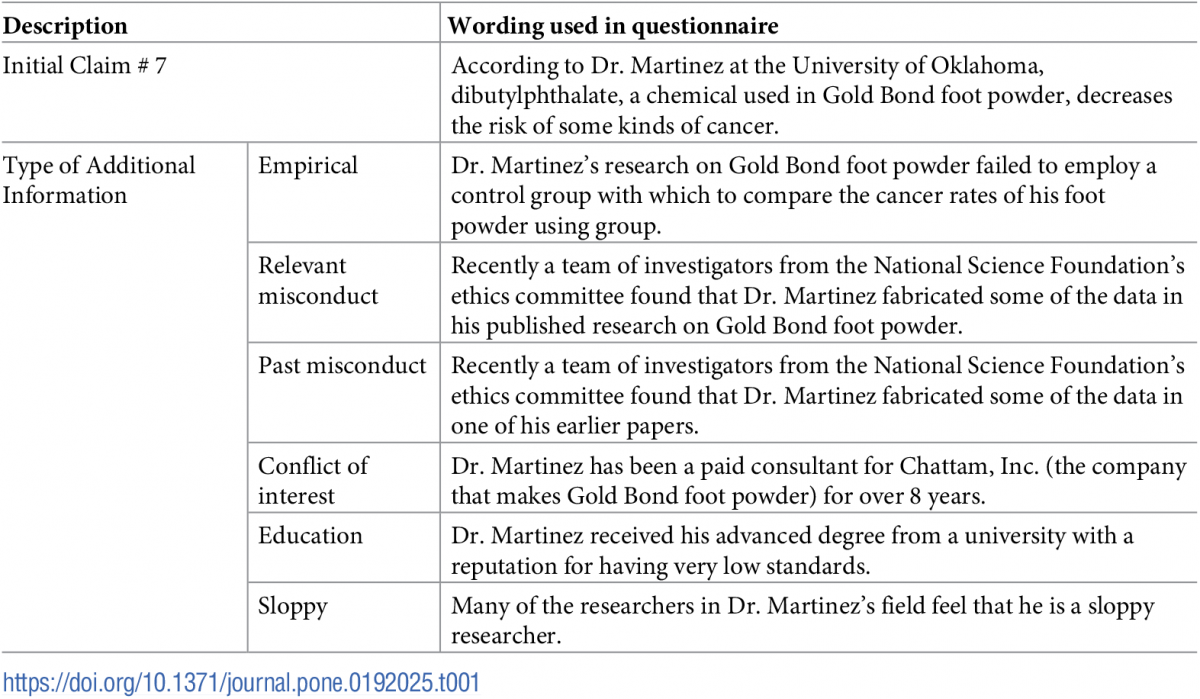Free Speech
"You're Fake News" The Unfortunate Reality of the Ad Hominem
An ad hominem attack is one directed at an opponent’s character rather than the substance of his arguments and claims.

When Donald Trump tweets, stock prices can tumble. Trump can wield greater influence with 280 characters than some world leaders can with entire economies. Reaching the public directly, Trump is able to personally attack an individual, agency, or company, and impact the news cycle for days, if not weeks, at a time. How can Trump’s attacks be so effective if the restrictions imposed by Twitter’s character limit leave so little room to formulate an argument?
Anyone who followed the bitter presidential race between Trump and Hillary Clinton in 2016 could be excused for thinking the evidence is already in. Trump and Fox spent months ceaselessly browbeating CNN and Clinton with attacks on their integrity, their associations, and their alleged motivations. Attacks ranged from accusations of corruption and criminality to anti-American intent. Clinton and CNN responded in kind, drawing parallels between Trump and Hitler, and painting him as exploitative and predatory in his business practices, narcissistic, sexist and racist.
Behind these shouting matches, various news channels were busily scrutinizing every statistic, accusation, and proposal, consulting experts and available data to ‘fact check’ these accusations on behalf of the American people. But, despite these attempts at accuracy, Americans’ trust in the mass media “to report the news fully, accurately and fairly” has reached its lowest level in polling history, with only 32 percent of respondents claiming they have “a great deal” or “a fair amount” of trust in the mass media. It appears that, armed with ad hominems and an insatiable blood lust, news organisations on all sides have engaged in all-out partisan warfare which has cost them dearly.
An ad hominem attack is one directed at an opponent’s character rather than the substance of his arguments and claims. In a recent PloS-one article, researchers Barnes et al. investigated the effects that ad hominem attacks have on people’s attitudes toward scientific claims. The researchers presented college students and adults with claims that either 1) attack a claim directly, 2) attack the researcher (e.g. relevant misconduct, past misconduct, or conflict of interest), or 3) attack both the data and the researcher.

Their results indicate that attacks on an individual’s credibility as a reliable source may be just as effective as attacking the claim that the person is making. Furthermore, combining ad hominem attacks with empirical counter-arguments seems to be no more effective than attacking the empirical claim in isolation. The results were the same for both college students and adults, suggesting that this effect may extend beyond the college campus and into the US population at large.
What’s striking about these results is their implication regarding the disturbing trends currently plaguing our society. Rewind to 2016, and the ad hominem arguments begin to make sense, not just from an academic perspective, but from a broader societal perspective. Trump attacked Clinton for being corrupt (i.e. misconduct), and at one point even suggested that if he became president, she would be thrown into jail. According to the research, the damning implication that she had engaged in criminal behavior worthy of prison time could be just as effective as actual evidence of criminality, and no less influential. Trump also frequently attacked CNN and the Clintons, for putting the interests of their friends and associates before those of ‘hard-working Americans,’ which implied a conflict of interest. Clinton took the same approach, attacking Trump for exploitative business ventures and for putting his own selfish desires ahead of America’s national interests.
The authors found that adding ad hominem or empirical criticism to the mix once one had already been used did nothing to enhance the credibility of the existing claim. So then why bother going after the facts once you have attacked a person’s integrity to similar effect? These findings leave a bitter taste. First, they signal the effectiveness of lazy arguments and disincentivize more sophisticated discussion of important issues, including questions as important and consequential as who ought to be president of the most powerful country in the world. Second, they suggest that attempting to mitigate collateral damage after blood has been spilled has very little effect on voter perceptions.
This study carries serious implications for discourse beyond electoral politics, and into the sphere of academe and wider public discussion. Each month there appears to be a new story about a public intellectual who has had an event canceled due to alleged promotion of ‘hate speech,’ or who has been disciplined by a university for encouraging ‘unsafe’ debate, or who has been stigmatized as ‘alt right’ and consequently requires security just to deliver their remarks on campus. The list of recent examples could fill a separate article.
These rhetorical devices are designed to label someone as an undesirable; the bearer of untrustworthy ideas that cannot be debated at face value. They are ‘fake news,’ as Donald Trump would say. The findings of the Barnes et al. paper allow us to face an uncomfortable truth. If you can convince someone that Steven Pinker’s expressed concerns about political correctness are based on ulterior, sinister motives, or that Dave Rubin is an adherent of a narrow-minded and racist ideology, then you need not waste time checking whether the ideas they espouse have any merit or are backed by good evidence. This has several important implications.

First, if attacks on a person’s character are effective, and potentially irreversible even with the subsequent addition of facts, it becomes easy to discredit people wishing to tackle the difficult but important issues facing our society. This tactic has the effect of instilling fear about the reputational costs of speaking up, and discourages individuals from forwarding controversial or unpopular hypotheses. The result is that prevailing ideas remain unchallenged. Such attacks are now commonplace on both sides of the political spectrum, with journalists and academics categorizing intellectual opponents as Nazis or Communists as a way of stigmatizing an individual in the mind of a casual reader not personally familiar with their views.
Second, as Pinker has observed, relying on ad hominems surrenders a rhetorical cudgel to opponents that can be especially dangerous in the hands of far-Right groups. If ideas are left to fester unaddressed instead of debated openly, then individuals susceptible to those ideas may seize upon their “most toxic interpretations” and decide that those interpretations are in fact forbidden ‘truths’ which the establishment has conspired to keep hidden. Since the idea itself is not being disputed in real debate, a simplistic and disfigured version of that idea is allowed to develop, stripped of important context. These ideas then enter a cycle of vindication as others deny them, push back, and force nuanced discussion into an ‘us and them’ mentality, thus creating the rise of dangerous ideas to be used as blunt force instruments.
This leaves us with a harsh truth that we must nevertheless less take seriously. Lazy and abusive rhetoric is an effective means of silencing of healthy debate. As a result, polarization in Western Society is likely to get far worse before it gets better.






